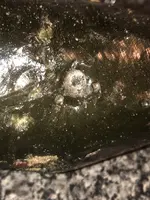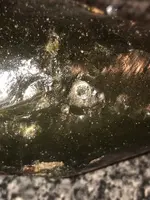Hi all I have an idea what this is. But would like some nutrul opinions. What do you think it could be. Thanks for your time.

 Unidentified rock
Unidentified rock




 Unidentified rock
Unidentified rock
 Unidentified rock
Unidentified rockThank you for your timeHi shanks
Welcome to the "Show"!
I agree it may be Melted Glass...but where may this have come from...or where you may live?
NATURAL DARWIN GLASS from METEORITE Impact AUSTRALIA?
Darwin glass is a natural glass found south of Queenstown in West Coast, Tasmania. It takes its name from Mount Darwin in the West Coast Range, where it was first reported, and later gave its name to Darwin Crater, a probable impact crater, and the inferred source of the glass.
The glass is light to dark green, white or black. The glass takes the form of twisted masses, fragments or chunks up to 10 cm. Internally it has a flowing texture defined by lines of elliptical bubbles.
The glass is an impactite resulting from the melting of local rocks due to the impact of a large meteorite. The assumed source is a 1.2-kilometer-wide topographic depression known as Darwin Crater. The crater is filled with 230 m of sediments and breccia. A crater of that size would be created by a meteorite 20 to 50 m in diameter and its impact with Earth would release 20 megatons of energy.
.View attachment 2126888
